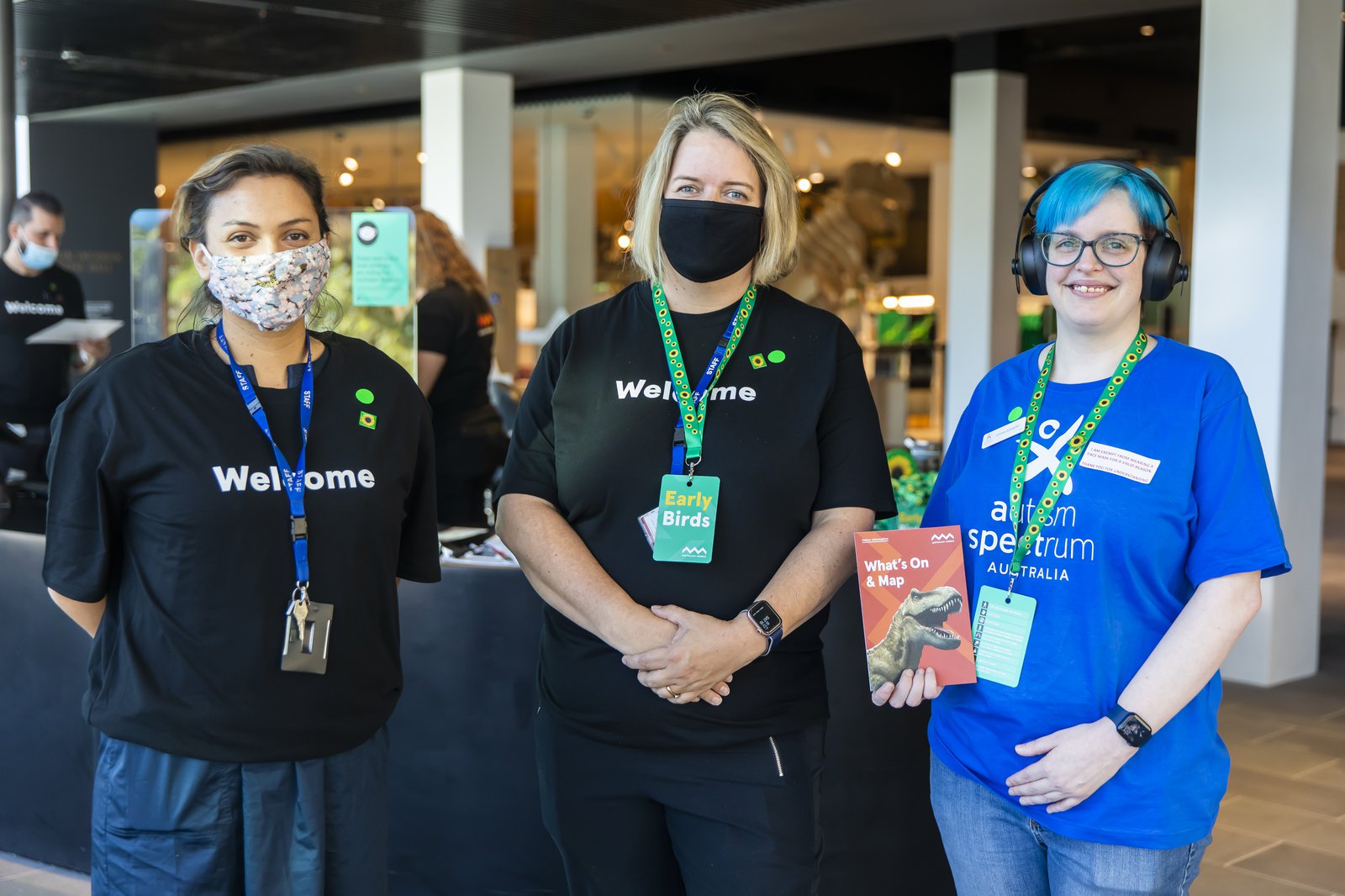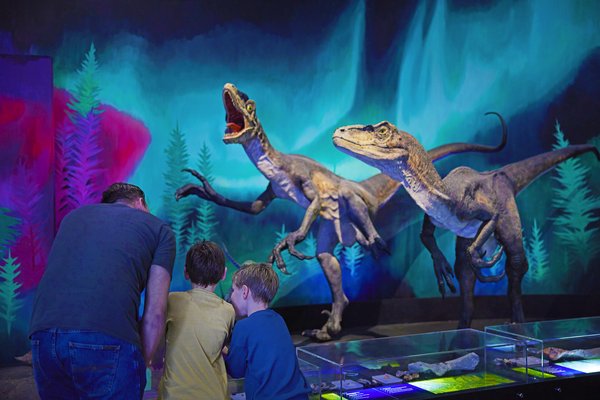Early Birds diary: A morning in January

© Australian Museum
The Australian Museum is for everyone, however people with disability or access requirements have identified barriers that may prevent them from visiting or participating in all the AM has to offer. Early Birds: Autism and Sensory-Friendly Mornings aims to break down these barriers.
Autism is a condition that affects how a person thinks, feels, interacts with others and experiences their environment. It is estimated that 1 in 70 people are on the autism spectrum. Although it is a spectrum condition and there is no ‘one size fits all’ solution, having some knowledge of the common challenges can help museums learn to support this audience and make them feel considered and welcome.
For visitors on the autism spectrum, busy, crowded environments can be difficult, and sudden changes in light and noise levels can cause sensory overload and distress. To break down this barrier, the free Early Birds program offers entry to the whole Museum prior to opening to the general public, meaning much-reduced visitor numbers. By opening early we are also able to augment the environment to better cater for people on the autism spectrum – we can provide special quiet spaces to allow visitors a place to reset, alter the lighting in galleries, turn down the volume of videos and interactives, and have specially trained staff on hand to provide a non-judgemental, supportive atmosphere.
Early Birds is a gateway event where visitors become familiar with the Australian Museum in a safe and supportive environment, in order to feel comfortable and confident visiting us again.
Early Birds diary: 16 January 2021

© Australian Museum
The first Early Birds event took place on Saturday 16 January 2021 from 8am to 10am.
As Early Birds arrived they were welcomed by Australian Museum staff who explained what to do and where to go next in the Museum.
It was great having Amanda Webster (Senior Executive Assistant) volunteering her time and supporting staff. Amanda previously worked for Giant Steps – an organisation founded to help educate children and families experiencing autism.

© Australian Museum
Visitors received a map of the Australian Museum. Some visitors commented that the inclusion of sensory features on the map made them feel thought of and welcome. Autism Spectrum Australia (Aspect) staff offered visitors a Hidden Disabilities Sunflower Lanyard, which provides positive behaviour expectations, for example, when a child had the desire to run inside, he reminded himself that ‘we walk inside’ by looking at the card.

© Australian Museum
Printed Visual Stories were available at Admissions. Early Birds were sent a PDF version in an email in the lead up to the event to help prepare for their visit and what to expect.
Aspect staff noticed a positive reaction from one child when he recognised a copy of the Visual Story at the front desk. His mother told Aspect staff that the family had read it together every night for a week, the child slept with it under his pillow and when he saw the familiar Visual Story at the Museum he said “my book, I’m here.”

© Australian Museum
Sensory Oasis Tents were donated by St Vincent de Paul. Children could use these tents to reset before they continued their journey through the Museum. They featured sensory toys, weighted lap pads or cushions, noise-cancelling headphones and other carefully selected resources. Thank you to Zehra Ahmed (Sustainability and Access Projects Coordinator) for organising these.

© Australian Museum
One of these Sensory Oasis Tents was positioned in the Members Lounge which was the designated quiet room for the event. Tents were also set up in 200 Treasures of the Australian Museum and a quiet area was set up on Level 2.

© Australian Museum
Time for a break and an early morning snack at the Hintze Hall kiosk. Thank you to Create Catering and the staff from the AM Shop for opening early. Having these facilities made the Early Birds experience as close as possible to a visit during general opening hours.

© Australian Museum
First Nations staff Charleen and Sophie welcomed Early Birds into the Bayala Nura exhibition with cultural and sensory objects at an interpretive table. The kangaroo and possum skins feels very soft, and the coolamon's bark feels rough. The emu caller makes interesting sounds.

© Australian Museum
Karanda (Pacific Collections) volunteered her time to facilitate an interpretive table in 200 Treasures of the Australian Museum. Some of these resources, such as the Meto navigation stick chart, feature in this exhibition. To help convey the purpose of the tables, ‘touch’ symbol cards were in place. Hand sanitiser dispensers were positioned adjacent to the tables.

© Australian Museum
Thomas from Aspect, a self-proclaimed dinosaur buff, gave highly engaging spot tours in Tyrannosaurs – Meet the Family.

© Australian Museum
The digital interactives were very entertaining.

© Australian Museum
The lighting in Tyrannosaurs had been increased for Early Birds and the volume of the dinosaur roar soundscape was lowered. This exhibition was very popular with attendees, and almost every group checked it out.
It was great to have additional staff in Tyrannosaurs in case visitors needed to be shown how to exit this high-sensory exhibition.

© Australian Museum
One Early Bird brought a T.rex tooth to the Museum. It matched the tyrannosaur skull in the exhibition!

© Australian Museum
The phasmids or stick insects were incredibly popular. Visitors were informed that they needed to be gentle with these living creatures and that the insects have delicate, hooked feet that can tickle!
To learn more read the Australian Museum’s Accessibility and Inclusion Action Plan (AIAP).
Please join us at the next Australian Museum Early Birds morning on Saturday 10 April. Register here.













